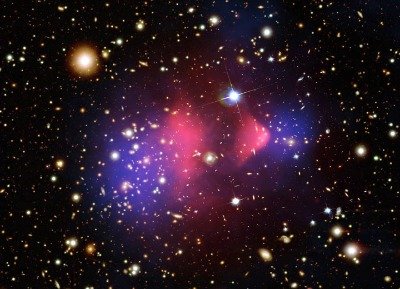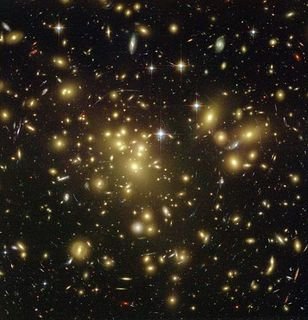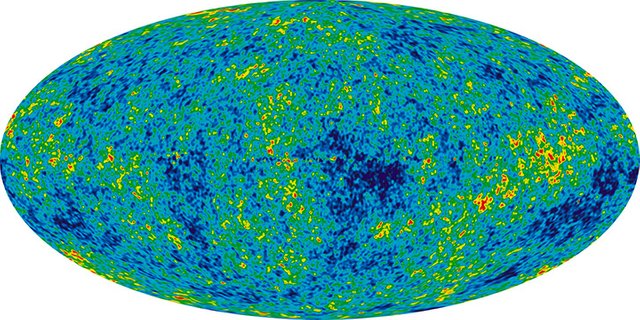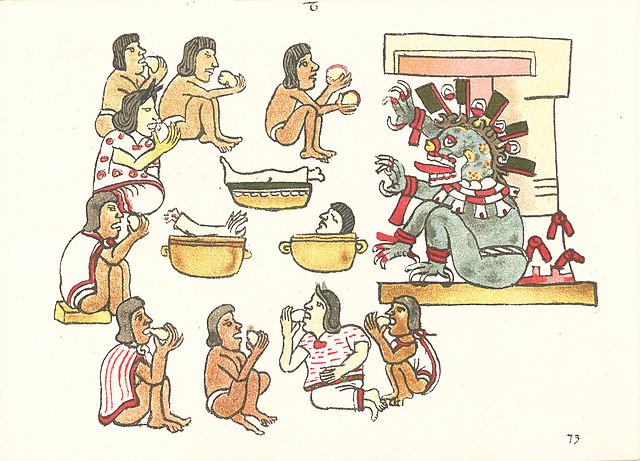Dark cannibalistic elders - dark matter strikes back
Non-conventional dark matter scenarios are being worked out regularly. Many physicists like the dark matter idea, but many physicists also like to think a lot about novel ideas.

[image credit: NASA]
Alternative dark matter scenarios, potentially explaining why no dark matter has been directly observed yet, are hence proposed regularly.
I will focus today on one of such scenarios, that feature specific dark matter particles that undergo processes from which they get their name ‘elder’.
They are moreover at the same time cannibals.
These ideas have received some attention recently, and I like the reading of the corresponding articles. As a result, a new blog post :)
DARK MATTER IN A NUTSHELL
I know I have already said it many many times, but repetition is good. I will quickly detail here what is exactly dark matter?
First, dark matter can be represented by a plush, as shown on the figure on the right below (I really enjoy those plushes :p). This should be reminded!
More seriously, in the wording ‘Dark matter’, there are the two words ‘dark’ and ‘matter’.

[image credits: Particle zoo]
Let us start with the matter part, this is the easiest to understand. Dark matter can be considered as a form of matter because it interacts gravitationally, as normal matter does.
However, strictly speaking, this is not something we already know what it is. We have actually no clue and dark matter must thus be made of some new stuff.
The wording ‘dark matter’ also includes the word ‘dark’. This has nothing to do with the color of dark matter. Nothing. The fact that dark matter is called dark is connected to electromagnetism: dark matter particles are not sensitive to electromagnetism.
Crudely, this means that they are insensitive to light particles (photons).
**To summarize: dark matter is something that interacts gravitationally, in a matter-like way, and that is blind to electromagnetic interactions. **
THE NATURE OF DARK MATTER
The dark matter hypothesis is very attractive, in particular as it provides an explanation for most cosmological observations (galaxy rotation curves, cosmological microwave background, etc.).
It is however not the only way to reconcile theory and data. For instance, there exist theories featuring a modification of gravity and that do not need dark matter at all to explain the data.

[image credits: Wikipedia]
Assuming we want to stick to the dark matter hypothesis, there are many particle candidate that could play the role of dark matter.
The most popular ones consist of weakly-interacting massive particles (like in supersymmetric theories) or axion-like particles, to name two of them.
However, not a single hint for these candidates has been found so far. As a result, there has been a renewed interest for alternatives.
Among those alternative one finds elder dark matter.
DARK MATTER PROCESSES IN THE EARLY UNIVERSE
Before moving forward, let us investigate what could happen to dark matter in the early universe. In order to do this, let us be simple and consider a dark matter particle X, and we start our discussion by considering a time in the universe history where it was super hot.
We are hence considering an epoch where the universe looked like a cosmic soup of matter and energy and where all particles are continuously being scattered and are undergoing nature changes.
There were at that moment several competing processes involving dark matter.

[image credits: NASA]
First of all, one dark matter particle X can scatter elastically with one Standard Model particle SM, like in the X + SM → X + SM process, or vice versa (I know, the vice versa process is the same. Just to check who is following :p ).
Secondly, two dark matter particles could annihilate into Standard Model particles, or vice versa: two dark matter particles can be created from the annihilation of two Standard Model particles, X + X ↔ SM + SM.
Thirdly, two dark matter particles can self-scatter into themselves, X + X ↔ X + X. The vice-versa is again the same :)
And finally, three or more than three dark matter particles can self-annihilate into two dark matter particles. X + X + X ↔ X + X. Mmmhhh, this sounds cannibalististic, doesn’t it?
We have thus four reactions in total: elastic scattering, annihilations, self-annihilations and self-scattering. And those reactions work both ways: final state to initial state and initial state to final state.
ELDERS AND CANNIBALS
I will now explain below what are those funky dark matter candidates that are called elders.
At the time the universe is super-hot, all the four above-mentioned reactions occur. But when the temperature of the universe drops (with its expansion), some of those reaction stop to be effective.

[image credits: Pixabay]
Concerning elders, the density of X in the universe will suddenly drop with the cooling down of the universe. As a result, the annihilation processes are not possible anymore.
One is thus left with self-interaction processes (reactions 3 and 4) and elastic scattering processes (reaction 1).
The order in which reactions 3 and 4 and the reaction 1 stop to be effective is very model dependent and not a generic feature at all. The elder scenario has the particularity that the reaction 1 stops before the self-scattering (reaction 4) and self-annihilation (reaction 3) ones.
This is very serious: this defines where the name elder comes from. Elder is nothing but an acronym for ELastically DEcoupling Relic.

[image credits: Wikipedia]
We are thus left with dark matter particles interacting with each other only.
The amount of dark matter particle can however change as we have a reaction where three dark matter particles are becoming two dark matter particles. This is what is called the cannibalization epoch.
And now one gets where the cannibalistic attribute comes from. We have a moment in the universe history where dark matter substantially eats itself!
Currently, such models are not crazy and accommodate the cosmological data.
TAKE-HOME MESSAGE AND REFERENCES
In this post, I wanted to discuss an alternative to popular dark matter models that is named elder dark matter. This model is rather young, regardless of its name, and have the property that dark matter turns to be a little bit cannibal (three or more dark matter particles may suddenly decide to eat one of them!).
More information can be found in the following scientific articles (or by asking a question in the comments of this post):
- The first publication on the elder scenario can be found here and has been published in Physical Review Letters.
- This is a very recent work on this setup.
- If you want to learn more on cannibal dark matter, see this article published in Physical Review D.
PS: @lordvader: what about using cannibal elders for your army?
gamma rays balance dark matter.
Euuh... I didn't get it. Do you mind being more specific? Thanks in advance! :)
wow ! Well done bro ! loved this post!
Do these cannibals like to eat hands? I seem to have a lot of those laying around.
As soon as you have more than one, I think this is doable! :)
X + X + X -> X + X + energy?
Or is total matter not conserved?
You actually point down one of the key point of the model. This reaction releases energy, and this allows dark matter to stay in thermal equilibrium with a temperature different from the one of the cosmic soup. But this is maybe too detailed (or not enough)?
I was just making sure that energy would still be conserved. I don't know, maybe things get weird with dark matter... I'm a dumb dumb on topics like this :)
Energy conservation is the basics. It is something very hard to give up, even for darker particles.
They do grow in size after cannibalization? The bigger the better in nature?
No they don't grow. They stay elementary. What is missing from my simplified equation is the energy released in the reaction. As I was saying to @justtryme90 here above, this energy is crucial with respect to the dark matter behavior in the universe history.
At some point, the 3 to 2 process will stop to be effective and only the 2 to 2 one will be left. And a bit later, all processes will stop and the dark matter density will freeze out.
In simpleton terms dark matter can be simply thought as the opposing force to gravity. Gravity bring matter together and dark matter stretching it apart and at times "cannibalizing itself"
Actually no. Dark matter is sensitive to gravity as any other particle. It cannot be seen as 'opposite' or anything like that.
I stated in "simpleton" terms as if you were to explain the concept to a bunch of school age children you would have a easier time making a contrast to gravity.
Okay I now see what you meant. The degree of simplification you were asking was not clear to me :)
I think the best way to explain that is that you have visible matter on the one hand, and something invisible (aka dark) on the other hand, the dark stuff living its live unconnected to us.
Gravity is special as in the sense it acts the same for what is visible and dark, and that it is also one the few observable ways where both dark and non-dark stuff can have a talk with each other.
I hope this is better ;)
Your articles as always, just blow my mind, in a good way. I love everything related to space, but have only superficial knowledge.
And you're like Morgan Freeman, which opens for me a new level of knowledge in simple language. Thank you!
Thanks for the nice message and the kind comparison :D
Very hard work by you... Dark matter and Dark energy is 95% and only the 5% is the visible Universe..good work...
You are indeed correct, but only under the assumption there is dark matter. There are ways to have a working theory without it.
Thanks for your message.
Interesting post!
I loved the demonstration with the plush haha
I hope in the future we can know more about dark matter
Me too me too! I am actually working on it :)
Why is the Dark Matter hypothesis the main focus of cosmological research when there are other theories that don't need DM? It seems to me that inventing DM just to balance equations is like following your favorite rabbit down a hole when there's another perfectly acceptable rabbit sitting in front of you .
The fact that standard cosmology explains very well the data is one of the reason. But not everybody focuses on this. This must be kept in mind. There are alternatives, and alternatives are very well alive (although possibly less spread towards the general audience).
I just ran across a video on YT from the World Science Festival and the panel was discussing dark matter and energy. It was very informative, not just in the background of why and how DM/E is being pursued, but also regarding the mindset of those investigating the theoretical phenomenon. It ended with Brian Green saying something like, "please, if it's all untrue that's fine with me, I just want to be a part of finding the truth".
I agree with this conclusion: if my research can help understanding something is correct or wrong, this will help the field to progress :)